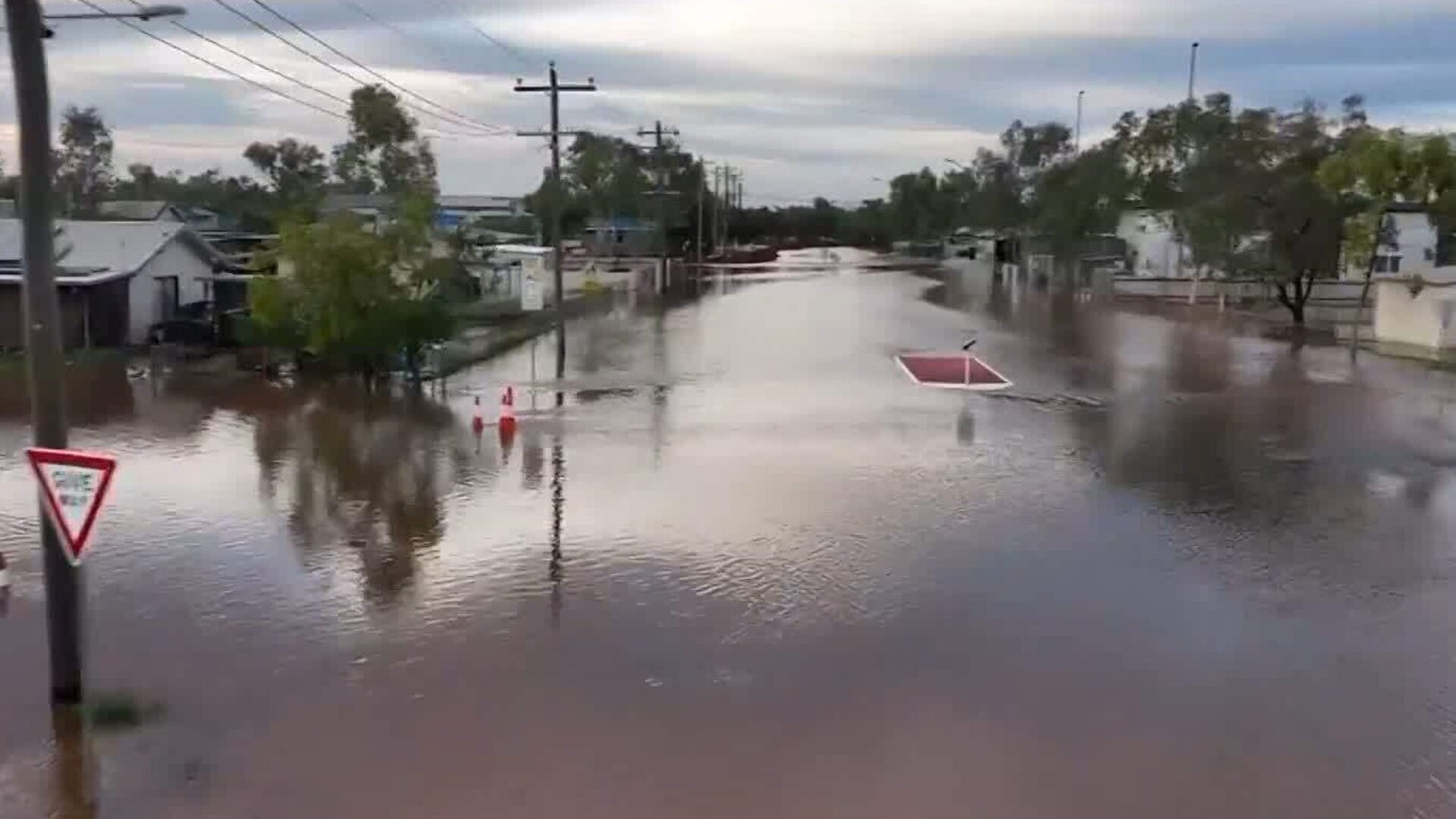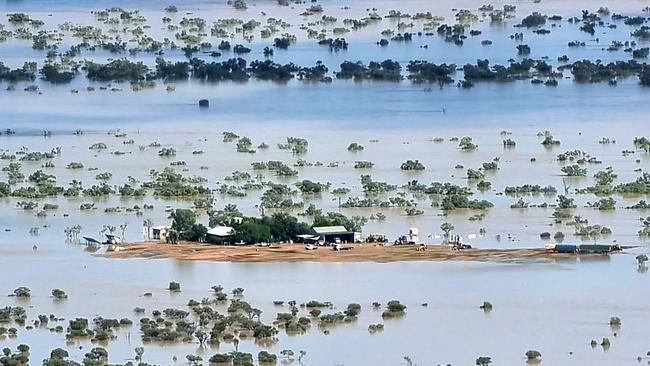Graziers face massive loss as Queensland records generational floods
More than 145,000 livestock could be missing or deceased and thousands of kilometres of roads and fencing potentially damaged in the Queensland floods. See the latest.

More than 145,000 livestock could be lost, as widespread flooding has left Queensland graziers in the lurch.
The Queensland Department of Agriculture and Fisheries’ early predictions show 145,000 livestock could be missing or dead, 3500km of fencing and 4700km of private roads could be affected.
“The impacted area covers approximately 700,000km2, encompassing significant portions of the central west and southwest regions of Queensland. This is an area almost equivalent to the entirety of NSW,” a Queensland Department of Primary Industries spokesperson said.
The estimates included 69,000 cattle and 67,000 sheep possibly missing or dead.
They said the department had received more than 100 disaster impact surveys, which showed the estimated loss numbers, more than $5m for an emergency fodder package for eligible farmers and freight subsidies of up to $5000.
There are four key distribution points for emergency fodder at Blackall, Charleville, Cunnamulla and Quilpie.
AgForce general manager Shane McCarthy said further rain had grounded helicopters and temporarily stopped fodder movement, but there should be weather relief in the next week.
“The one thing they don’t need is water. It’s more fodder, it’s keeping what’s alive, alive,” he said.
“We’re getting them to areas where they can access. Then we’ll start to look at the recovery stage,” he said.
Mr McCarthy expected full recovery to take about two years, but he said the state government support had been “excellent”.
“Whatever we’ve asked for, they’re making sure that it’s happening,” he said.
“These farmers need to know that they’re being heard. If people want to donate, they can donate to the relevant charities who can help them.
“When it dries out, get to those communities and visit those communities, give the tourist dollar.”

Bureau of Meteorology senior meteorologist Dean Narramore said Longreach, Thargomindah, Cunnamulla and Quilpie communities were some of many communities experiencing major flooding.
He said another 50-100mm in those areas could cause flash and riverine flooding, with “already-saturated” catchments.
“On the Blue River, we’re seeing flood levels well above the 1974 flood levels and it’s continuing to slowly rise there, which is causing massive impacts,” he said.
“Most of the town is underwater.”
He said several Queensland rivers were experiencing generational floods.
“It’s a major, big and devastating flood occurring for much of southwest Queensland, and we received another 30-50mm overnight,” he said.
“These rivers are probably going to be in major flooding somewhere along its path for weeks. There’s just so much water in these catchments as well.”
The Queensland SES had 58 requests for assistance in the past two days, predominantly at the Gold Coast and Rockhampton with 31 per cent related to flooding, and 36 per cent for structural damage.
The Bureau currently has 26 warnings issued for Queensland, including six major flood warnings, a severe thunderstorm warning and a sheep graziers warning.
Queensland’s highest weekly rain totals fell across the central and coastal regions, including Mutarnee (518mm), Sunbury (494mm), Rainbow Beach (461mm) and Tin Can Bay (450mm).
There are currently 33 unplanned power outages in greater Queensland, with 276 customers without electricity.
Ergon Energy crews will fly to Thargomindah once it’s safe to do so, after the company de-energised more than 75 per cent of the Thargomindah township for electrical safety as floodwaters rose.
Meanwhile, the Queensland government also appointed a state recovery co-ordinator and a deputy, Stuart Mackenzie and Troy Pukallus, on Tuesday, with plans to make the recovery process “as easy as possible”.
State Premier David Crisafulli said western Queenslanders had “lost everything” and they wanted to ensure communities would recover quickly.
“Western Queenslanders are resilient, and this is about matching that attitude with action to ensure they can recover and rebuild as quickly as possible,” he said.
Queensland Minister for Primary Industries Tony Perrett said the flood emergency could only be described as “heartbreak”.
“To watch cattle and sheep that you’ve tended for generations perishing in flood waters must be utterly heartbreaking,” he said.
The Labor and Coalition also pledged $10m each for a new weather radar in western Queensland.
Agribusiness support resources are available here.



